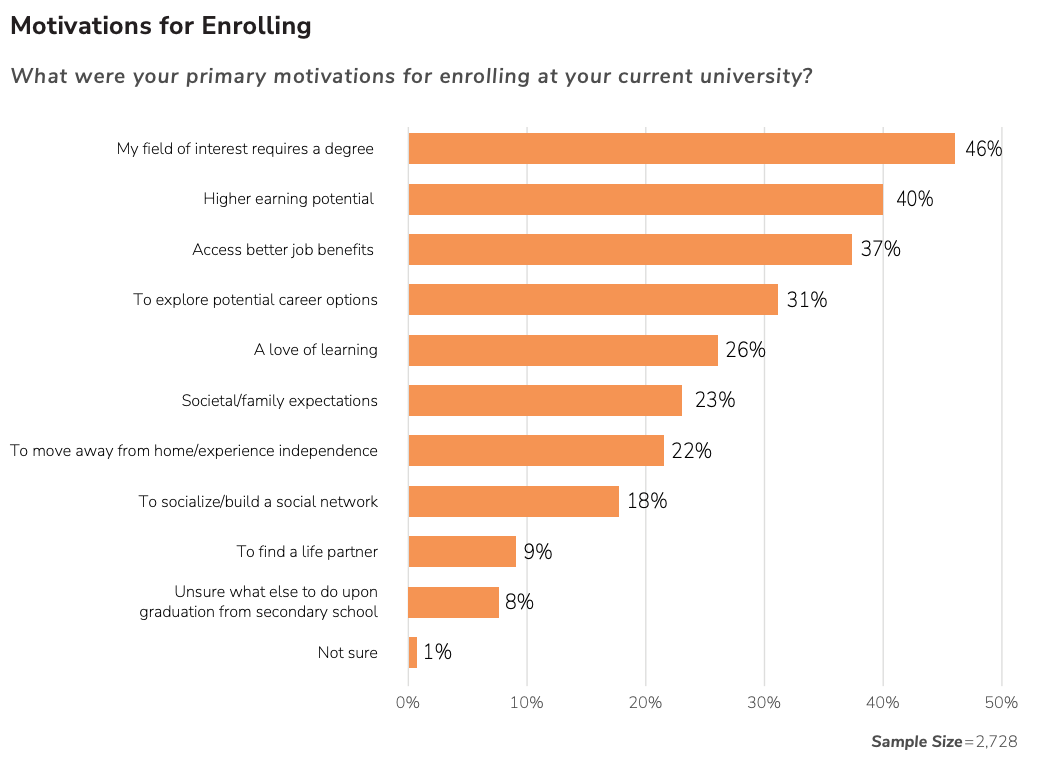
Eyes on the Prize: A Data-Informed Approach to Promoting Career Readiness in Student Affairs
Connecting learning with employment opportunities is crucial for institutional success in higher education. With students consistently reporting that progression in the workforce is both their main motivation for starting a credential and inspiration to persist when challenges arise, advancing career readiness is essential throughout the learner lifecycle—including in recruitment messaging, curriculum design, co-curricular experiences, and more.

Source: The Students’ Perspective: Valuable Insights for University Leaders - Global Edition | Anthology
This is no easy task in the fluctuating modern economy. The workforce now offers a broader range of careers than ever before, with economic, cultural, and technological trends dictating that sought-after skills change with increasing frequency. To cite one prescient example, the rise of generative AI tools such as ChatGPT has prompted a significant spike in demand for AI literacy from students and employers alike.
Adding complexity, each higher education institution requires a unique and tailored approach. Factors such as the program offering, learner demographics, and local job market combine to form distinct career readiness needs for each school, and student affairs leaders—particularly those focused on career services—should engage with learners to understand their aspirations, concerns, and needs.
Data-informed technology can help student affairs leaders to develop and implement strategies which close the loop between course content, co-curricular experiences, and career opportunities. This starts with access to real-time insights on market trends and the capabilities that employers like to see in applicants. A range of common student inquiries—such as “how competitive is employment in my field of study?”, “what salary am I likely to earn?”, and “how can I best position myself to get chosen for the job?”—can nowadays only be answered accurately if the advisor has robust market information readily on hand. Our Anthology® Occupation Insight tool provides this data to institutions, with Coppin State University a great example of how it can be leveraged through the student journey.
Equally important is ensuring that students understand how they are progressing toward their career goals. Learners want workplace relevance not only holistically for their degree but also more narrowly for the courses and experiences they have along the way. Tying learning activities—including co-curricular participation—directly to professional advancement is a great way to build student engagement and persistence. This doubles as an important consideration for instructors and instructional designers, who can optimize course materials by regularly reviewing how they align with the skills that are needed in the job market.
Badging and micro-credentialing is a growing way of meeting this need. By aligning programs with attained competencies and providing ongoing recognition for student achievement, badges represent a great opportunity to link study and employment. We offer Anthology® Milestone to help institutions get started with badging, and are expanding on its integration with our LMS, Anthology® Blackboard, to allow new credentials to be aligned with traditional course materials and programs.
The days when workforce preparation was the exclusive domain of the career services team are clearly in the past, and all parts of the learner lifecycle now need to be orientated around this area. Student affairs professionals remain crucial, however, and institutions which take a data-informed approach will have the best chance of success.
Interested in learning more? For badging and micro-credentialing check out Anthology Milestone, and for workforce trend insights try Anthology Occupation Insight.